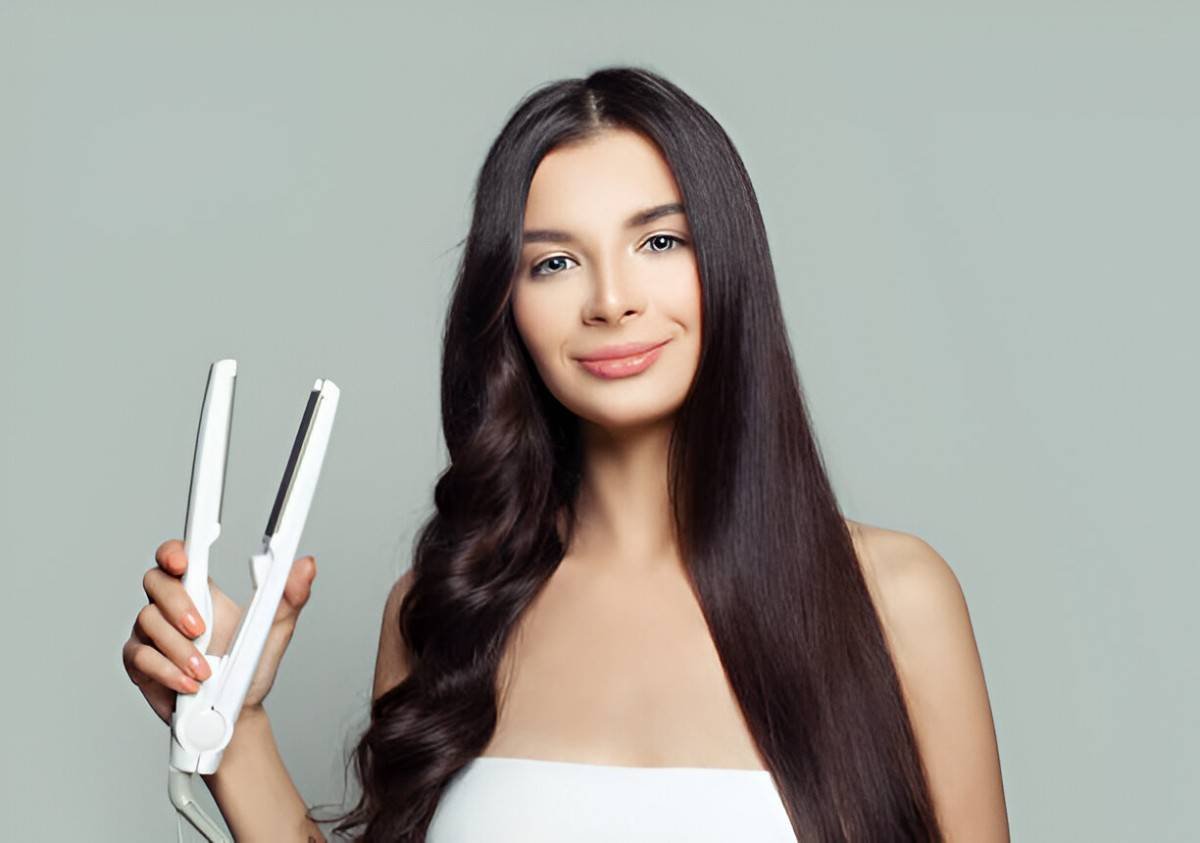If you’re like me and enjoy sleek, straight hair, choosing the right hair straightener is essential. Over the years, I’ve tested various models and learned what works and what doesn’t. With so many options out there, I know how overwhelming it can feel. This guide aims to simplify the process by focusing on what truly matters when selecting the best hair straightener for your needs.
Table of Contents
Why Choosing the Right Hair Straightener Matters
Not all hair straighteners are created equal. A good one can make your hair smooth and shiny, while the wrong one might leave it damaged and brittle. Hair type, heat settings, and plate materials are just a few factors that make a significant difference.
Key Benefits of Investing in a Quality Hair Straightener
- Healthier Hair: Advanced technology helps prevent heat damage.
- Consistent Results: High-quality straighteners offer uniform heat distribution.
- Time-Saving: They heat up quickly and work efficiently.
- Durability: A well-made device can last for years.
Understanding Different Types of Hair Straighteners
Hair straighteners come in various designs and functionalities. Let’s break down the most common types:
1. Ceramic Hair Straighteners
Ceramic plates distribute heat evenly, making them suitable for most hair types. These are a safe choice for beginners and those with fine or slightly wavy hair.
Pros:
- Smooth glide across the hair
- Minimal heat damage
- Affordable
Cons:
- Takes longer to heat up
- May not work well on very thick or coarse hair
2. Titanium Hair Straighteners
Titanium plates heat up quickly and maintain high temperatures consistently. These work best for thick or coarse hair.
Pros:
- Fast heat-up time
- Durable and lightweight
- Effective on stubborn hair
Cons:
- Can cause more heat damage if used incorrectly
- Often more expensive
3. Tourmaline Hair Straighteners
Tourmaline plates emit negative ions to reduce frizz, making these ideal for people with frizzy or damaged hair.
Pros:
- Leaves hair smooth and shiny
- Reduces static and frizz
- Gentle on the hair
Cons:
- Pricier than ceramic options
- Not widely available
4. Wet-to-Dry Hair Straighteners
These devices are designed to straighten damp hair, saving time by eliminating the need for blow-drying first.
Pros:
- Time-efficient
- Suitable for busy routines
Cons:
- Higher risk of damage if not used carefully
- Results may not last as long
Features to Look for in a Hair Straightener
When shopping for a hair straightener, keep these features in mind:
1. Plate Material
The plate material determines how the heat interacts with your hair. As discussed earlier, ceramic, titanium, and tourmaline are the main types. Choose one based on your hair’s needs.
2. Heat Settings
Adjustable heat settings allow you to tailor the temperature to your hair type. Fine hair requires lower heat, while thick or coarse hair can handle higher temperatures.
3. Plate Width
Wider plates are better for long or thick hair, while narrow plates are ideal for short hair and precision styling.
4. Heat-Up Time
A straightener that heats up quickly saves time, especially during busy mornings.
5. Auto Shut-Off
Safety is crucial. An auto shut-off feature prevents accidents by turning off the device after a set period of inactivity.
6. Cord Length and Swivel
A long, swivel cord ensures flexibility and ease of use, especially for at-home styling.
Comparing Top Hair Straighteners
Here’s a comparison table to help you decide:
| Feature | Ceramic Straighteners | Titanium Straighteners | Tourmaline Straighteners |
|---|---|---|---|
| Heat-Up Time | Moderate | Fast | Moderate |
| Frizz Control | Moderate | Low | High |
| Suitability for Hair Types | Fine to Normal | Thick to Coarse | Frizzy to Damaged |
| Price Range | Affordable | Expensive | Mid-Range |
How to Use a Hair Straightener Safely
Using a hair straightener correctly minimizes damage and maximizes results. Here’s my routine:
- Prepare Your Hair: Wash and dry your hair thoroughly. Use a heat protectant spray.
- Set the Temperature: Choose the right heat setting for your hair type.
- Section Your Hair: Divide your hair into manageable sections.
- Straighten: Start from the roots and glide the straightener down to the ends in one smooth motion.
- Finish with Care: Apply a serum for added shine and protection.
Top Brands to Consider
When it comes to reliability, these brands consistently deliver:
1. GHD
Known for their sleek designs and advanced technology, GHD straighteners are a favorite among professionals.
2. Babyliss
Babyliss offers a wide range of affordable yet high-performing straighteners.
3. Dyson
Although expensive, Dyson’s innovative designs are worth considering for their minimal heat damage.
4. Remington
Remington combines affordability with functionality, making it a great choice for budget-conscious buyers.
Maintenance Tips for Longevity
To ensure your straightener lasts, follow these maintenance tips:
- Clean the Plates: Wipe them down with a damp cloth after each use.
- Store Properly: Keep the straightener in a heat-resistant pouch.
- Avoid Dropping: Handle with care to prevent damage.
Final Thoughts
Choosing the best hair straightener doesn’t have to be daunting. By considering your hair type, preferred features, and budget, you can find the perfect match. I hope this guide makes your decision easier and leads you to a product that suits your needs. Remember, healthy hair is always in style.





